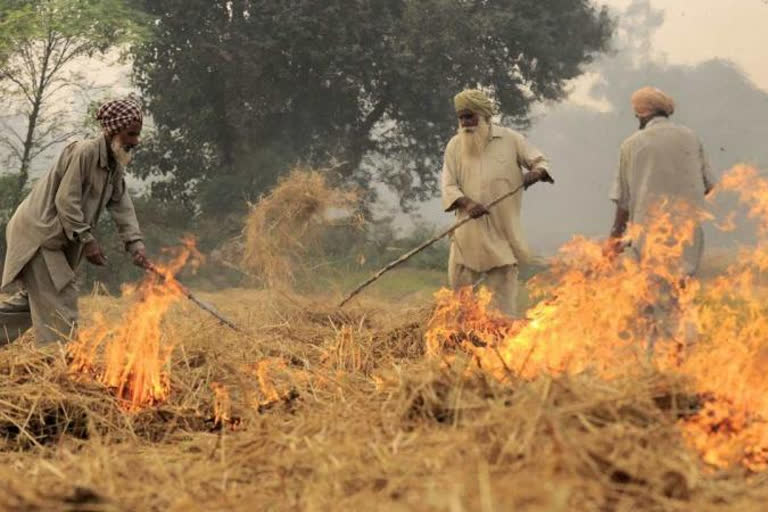New Delhi: The share of stubble burning from the neighbouring states of Punjab and Haryana in Delhi's pollution rose to 46 per cent on Friday, the highest this year, government agency SAFAR said as the air quality in the national capital nose-dived further.
As the pollution levels entered the "severe-plus" category, the Supreme Court-mandated Environment Pollution (Prevention and Control) Authority on Friday declared a public health emergency in the Delhi-NCR region and banned construction activity till November 5.
It also asked implementing agencies to take immediate stringent action to stop stubble-burning in the neighbouring states of Punjab and Haryana.
Read:| Delhi remains shrouded in toxic haze for third consecutive day
According to the Ministry of Earth Sciences' air quality monitor, SAFAR, the share of stubble burning in Delhi's pollution rose to 46 per cent on Friday, with farm fires continuing to rage in Haryana and Punjab.
"The effective stubble fire counts of Northwest India (Haryana and Punjab) is showing an increasing trend and on its peak value of this year (3178) which has increased its share significantly to 46 per cent," the SAFAR said.
Factors that remained unfavourable towards a dispersion of pollutants included low surface wind speed, dust lifting and low humidity, the SAFAR said.
However, a positive development is that now transport-level wind direction is westerly but the relief is "short-lived", the agency noted.
Read:| About 30% surge in respiratory cases in OPD post festive season, say Delhi docs
"A slight improvement in AQI is expected by tomorrow but in the same severe category. By November 3, significant improvement in air quality to the upper end of very poor is expected and by November 4 further improvement to the very poor category is expected," the SAFAR said.
The overall Air Quality Index of Delhi was recorded in the "severe" category at 484 at 3 pm with almost all monitoring stations recording "severe" air quality, the Central Pollution Control Board (CPCB) said.
An AQI between 0-50 is considered 'good', 51-100 'satisfactory', 101-200 'moderate', 201-300 'poor', 301-400 'very poor' and 401-500 'severe'. Above 500 falls in the 'severe-plus emergency' category.
In a letter to the chief secretaries of Punjab and Haryana, EPCA chief Bhure Lal said, "The EPCA has directed implementing agencies to take immediate stringent actions to stop stubble-burning in neighbouring states of Punjab and Haryana."
Read:| Health emergency declared in Delhi, schools to be closed till Nov 5



